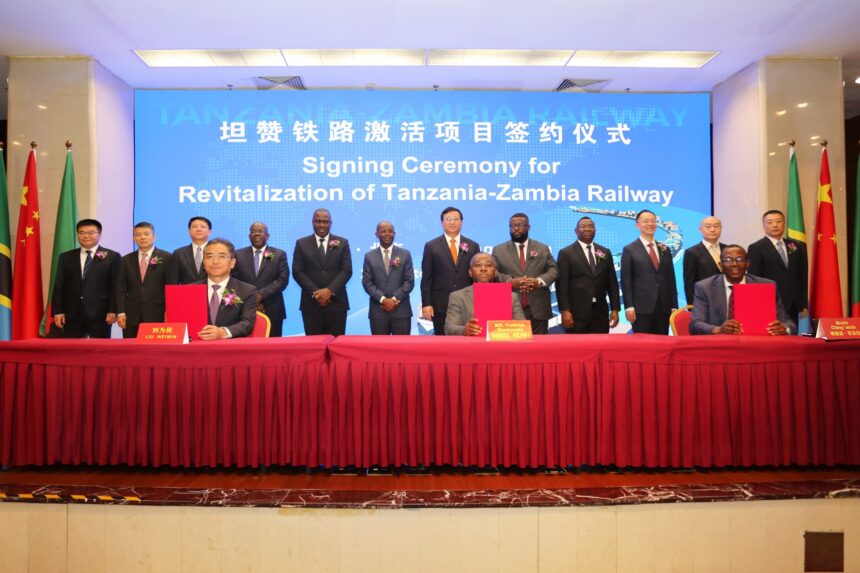Tanzania and Zambia have officially launched the comprehensive rehabilitation of the Tanzania–Zambia Railway Authority (TAZARA), a landmark project aimed at revitalizing regional trade and strengthening transport connectivity across the Southern African Development Community (SADC) and the East African region.
The project, valued at USD 1.4 billion, is being implemented with support from the China Civil Engineering Construction Corporation (CCECC). The foundation stone-laying ceremony took place on 20th November 2025 in Lusaka, Zambia, attended by senior officials from the three partner countries—Tanzania, Zambia, and China.
The rehabilitation program covers extensive modernization of the 1,860-kilometer TAZARA line—975 kilometers in Tanzania and 885 kilometers in Zambia—including upgrades to railway tracks, stations, and communication systems. It also includes the procurement of 34 locomotives, 760 wagons, 18 passenger coaches, and two full passenger trains. Once completed, the project is expected to boost freight capacity to 2.4 million tonnes annually by the third year of operation.
Speaking at the ceremony, Tanzania’s Vice President, Ambassador Dr. Emmanuel Nchimbi, who represented President Dr. Samia Suluhu Hassan, emphasized the historic bond between the three nations.
“History teaches us that when Tanzania, Zambia, and China stand together, no challenge is too great,” he said. “If the founders of these countries could build the Freedom Railway, the current generation can rehabilitate TAZARA and make it a model of 21st-century cooperation.”
The event was also graced by Zambian President Hakainde Hichilema, China’s Premier Li Qiang, Tanzania’s Permanent Secretary of the Ministry of Transport, Prof. Godius Kahyarara, and TRC Director General Engineer Machibya Masanja, among other government representatives and technical experts.
Originally constructed in the 1970s with Chinese support, TAZARA—also known as the “Freedom Railway”—was designed to give Zambia a secure and independent trade route through the Port of Dar es Salaam, bypassing apartheid-era transport corridors in Southern Rhodesia (now Zimbabwe) and South Africa.
Today, the railway remains a critical economic lifeline, facilitating the movement of agricultural goods, minerals, industrial products, and passengers between Tanzania and Zambia. However, years of aging infrastructure and limited maintenance have affected its efficiency and reliability.
The new rehabilitation project seeks to restore TAZARA’s operational strength, cut travel times, expand trade volumes, and enhance regional integration, reaffirming the railway’s place as a cornerstone of African cooperation and development.


